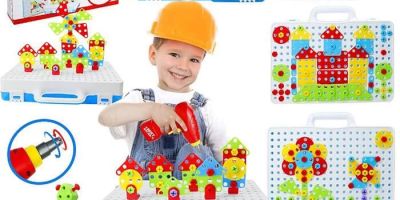- 1 - The-importance-of-empathy-in-child-development
- 2 - Using-play-to-teach-empathy
- 3 - Role-playing-and-imaginative-games
- 4 - Collaborative-and-cooperative-play
- 5 - Storytelling-and-emotion-recognition
- 6 - Real-life-examples-and-parental-involvement
- 7 - Recommended-toys-and-resources
1. The Importance of Empathy in Child Development
Empathy is a cornerstone of emotional intelligence that allows children to understand and share the feelings of others. Developing empathy early fosters compassion, social skills, and positive relationships throughout life. Teaching kids about empathy through play makes this complex skill accessible and enjoyable, setting the foundation for a more empathetic society.
Scientific studies show that children who engage in empathy-building activities tend to have better conflict resolution skills and greater emotional resilience. Parents and educators play a crucial role in guiding children through these lessons in supportive environments.
2. Using Play to Teach Empathy
Play is the natural language of children and a powerful tool to teach empathy. Through play, kids explore emotions, practice perspective-taking, and develop an awareness of others’ needs. Unlike direct instruction, play offers experiential learning, where empathy is practiced in real-time interactions.
Incorporating empathy lessons into daily play routines can be simple yet impactful. Activities like sharing toys, taking turns, and discussing feelings during play help children internalize empathetic behavior.
3. Role-Playing and Imaginative Games
Role-playing games invite children to step into someone else’s shoes, experiencing emotions and situations from different perspectives. This imaginative play encourages deep empathy by simulating real-life scenarios, such as caring for a sick doll or acting out a friendship conflict.
For example, a group of preschoolers engaging in a “family” game learn to negotiate roles, show concern for each other, and resolve disputes kindly. Such experiences enhance emotional vocabulary and empathy skills simultaneously.
4. Collaborative and Cooperative Play
Games and activities that require teamwork promote empathy by encouraging children to consider their peers’ ideas and feelings. Cooperative tasks such as building blocks together, group puzzles, or team sports highlight the importance of listening, sharing responsibility, and celebrating others’ successes.
This form of play strengthens social bonds and teaches children how their actions affect group dynamics, fostering mutual respect and understanding.
5. Storytelling and Emotion Recognition
Storytelling is a timeless way to teach empathy by exposing children to diverse characters and situations. Reading books or sharing stories that focus on emotions helps kids recognize and label feelings, an essential step in empathic understanding.
Discussing characters’ motivations and challenges encourages children to think beyond their own experiences. For example, talking about a story where a character feels lonely opens conversations about kindness and inclusion in real life.
6. Real-Life Examples and Parental Involvement
Children learn empathy best when adults model empathetic behavior consistently. Parents sharing their feelings, validating children’s emotions, and demonstrating kindness teach empathy through example.
One family shared how playing empathy-focused board games together created opportunities for meaningful conversations and strengthened their bonds. These authentic interactions complement play and deepen learning.
7. Recommended Toys and Resources for Teaching Empathy
Choosing the right toys can enhance empathy learning through play. Dolls and figurines representing diverse backgrounds encourage inclusive play. Emotion flashcards and games that focus on feelings recognition support emotional literacy.
For those interested in quality empathy-building toys, Knight Toys offers a curated selection designed to engage children meaningfully while promoting social-emotional growth.





